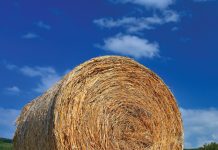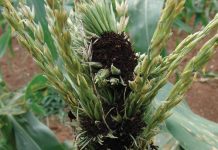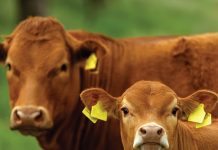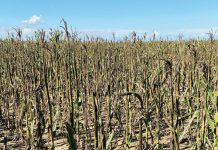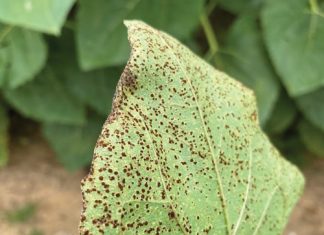
The past year has been particularly difficult for producers of winter grains and sheep. ‘We appreciate that producers are under immense pressure with the low meat and wool prices, and many are faced with the decision to abandon their livestock components. The wheat price is also not wonderful,’ says Dr Johann Strauss, senior scientist for sustainable cropping systems research at the Western Cape Department of Agriculture.
Aside from low prices, livestock profitability is further eroded by animal health setbacks and stock theft. This, combined with the greater time and labour requirement of livestock, has led many producers to question whether livestock farming is worth the trouble. Moreover, livestock numbers on Western Cape grain farms generally mirror the smaller hectares compared to those in summer rainfall areas, meaning a comparatively smaller potential for overall meat income, on top of the fact that meat income per hectare is nowhere near that of wheat.
Yet, experts point to the cyclical nature of commodity prices and caution producers to not make decisions which they may come to regret. ‘All our research shows that the systems with livestock are the most stable over time in terms of gross margins,’ says Dr Strauss.
‘We also see that weed control in these systems are much better and the input costs lower than cash crop-only systems. With this in mind, as well as the history of production in the winter grain regions, I would be very careful to simply get rid of all livestock. The Southern Cape went through a long dry spell of about seven years before the current positive (climate) cycle, and in that time, livestock carried the farming enterprises. If I now suddenly got rid of all my livestock, and the wheel turned and there was pressure on cash crops due to climate circumstances, what will carry me through those years?’
Cobus van Coller, maize and soybean producer from Viljoenskroon, who has livestock and cover crops integrated in his cropping system, also notes that financial institutions are generally not keen on financing livestock purchases. ‘This means if you sell all your livestock, it may be difficult to re-establish a livestock business later if you change your mind.’
Dr Strauss says a better option than eliminating all livestock would be to rather reduce numbers and retain a core flock. ‘With good pasture management it is possible to control weed growth and also save money. And once the meat and wool prices turn, you won’t have to start over.’
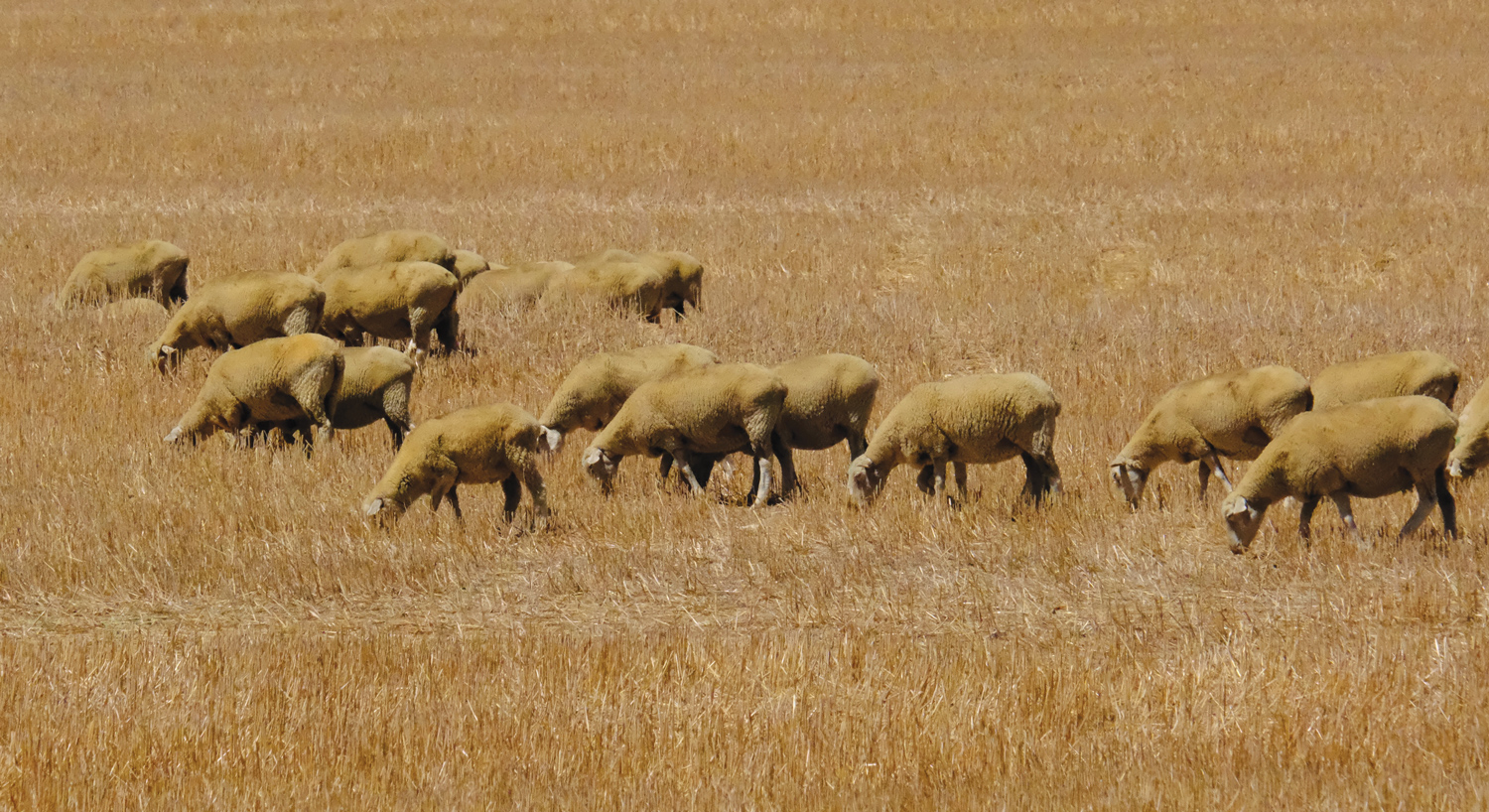 Risk management
Risk management
Dr Willem Hoffman, senior lecturer in agricultural economics at Stellenbosch University, has one word for grain producers who want to abandon livestock farming: ‘Don’t!’
‘Extensive research shows that there are two factors you cannot lose sight of. The first is risk. The risk associated with cash crops alone, where both yield and quality are uncertain while costs are certain, is significantly higher. To make a good profit, producers prepare for the “best” possible harvest, including inputs and planting density, but ultimately yield is determined by rainfall distribution.
‘Livestock is far more forgiving, both meat and fibre production. Variances in carcass mass and wool quality are not that big, and can be managed with additional cost (feed). By comparison, your ability to excel with insufficient rainfall distribution is more or less zero.
‘Secondly, farming is a long-term business, even though producers, economists, and bankers all tend to measure achievement in one year’s cashflow. Looking at return on capital – which is your ability to grow your business – cash crops with pasture beat the cash crop-only systems over periods of 20 years and longer.
‘The reason boils down to risk. In grains-only systems bad years lead to negative profits. The replacement of capital items such as machinery and implements is incredibly expensive, and that value depreciates. The value of livestock, on the other hand, does not depreciate like machinery.’
He cautions that it may also not be possible to reverse one’s decision to do away with livestock.
‘If you decide in five years’ time you want to get back into livestock, the machinery you bought with the money from your sheep has doubled in price, but yours has halved due to depreciation. You also won’t be able to get your genetics back. If you want to re-enter the sheep industry, you’ll start with the animals other farmers didn’t want, unknown fertility, growth curves and mothering traits.’
Dr Hoffman believes producers should keep the cyclical nature of markets in mind before making a decision, noting that anything that goes down, will eventually rebound.
Dr Strauss urges producers who do decide to abandon their livestock component to try and retain the benefits of livestock in their cropping systems. This can be done by entering into an agreement with a neighbour with livestock to graze problem fields, with a view to reduce herbicide costs and combat herbicide resistance.

Business and system benefits
Dr Strauss also points to wider system-scale consequences of doing away with livestock in conservation agriculture (CA) systems. ‘What will happen to the pastures if we get rid of the livestock? Suddenly there are no medics and lucerne, unless a producer decides to bale and sell it as a cash crop, and with that the option of a legume that produces cheap nitrogen is also gone.’
Rebecca Ellerbeck, an MSc student at Stellenbosch University, notes that livestock introduces the potential of circular economies where different on-farm systems benefit one another. ‘Depending on what your system looks like, this might include growing extra feed during the growing season and storing it in the form of hay or silage so that you don’t have to later buy in feed. Another advantage of livestock is: Should grain prices drop incredibly low or there is damage or crop failure, that failed crop can be used towards livestock, meaning it is not a complete financial loss.’
She says it is difficult to put a monetary value on livestock’s contribution to a grain operation, because producers generally never have a direct on-farm comparison between how their systems fare with and without livestock. That said, the benefits of more diversity and nutrient cycling, along with good weed control and less spending on fertilisers and herbicides are undeniable. ‘You also have to think of preserving the ecosystem on your farm, and not just farming year to year from a financial point of view, but how to do this sustainably in years to come.’
Van Coller says the point is not to directly compare the income potential and profitability of one’s livestock component to one’s cropping system, as they serve different functions within the business.
‘The one (cropping) is a cash crop and a year-on-year effort, whereas your cover crops and livestock are a long-term investment which you do for two reasons. The first is to improve your soil health, which has an incredible investment value, and the second is that you reduce your risk with diversification into livestock. These are two wholly separate legs of your business.’
He also notes that financial institutions view the constant cashflow throughout the year that is made possible with livestock trading much more positively than the more irregular costs and incomes from a cropping business. John Dürr, veteran of the Western Cape red meat industry and former chairman of the Western Cape Red Meat Producers Organisation, adds that livestock income can also more easily be spread out over different tax years.
No half measures
Grain producers who are uncertain about whether to retain their livestock component may also benefit from seeing how they can improve their livestock management practices, as this can increase profitability.
Dürr says the state of a farm’s stock handling facilities offer a good indication of how efficient the operation is. ‘The moment it’s a struggle – if you battle with gates and need a lot of labour to work your sheep – you are not going to do the work properly.’
He says simple steps such as ensuring that you have a scale at hand to accurately measure medicine and feed can lead to a marked improvement in production efficiency and animal condition. In addition, the livestock component should be managed in such a way that the lambing season does not overlap with planting and harvesting periods.
Van Coller concedes that livestock farming is not for everyone, and that livestock has to make sense in the business as well as the farming context. ‘You have to devote the same kind of attention to your animals as to your cropping business; it cannot be treated as an afterthought, and it must be profitable in its own right.’
For optimal efficiency, he believes livestock should be raised exclusively on cover crops and pasture.
He also believes that producers should optimise profitability from cover crops. ‘You should treat your cover crop as a cash crop, and the way to do this is with high-intensity grazing; then your livestock turns those cover crops into cash.’
Dürr is aware of at least one producer in the Swartland who bolstered his income by buying in oxen to graze on cover crops. Ellerbeck says during low-rainfall periods the risk of not reducing livestock numbers enough is greater than the risk of reducing them by too much. ‘If you exceed your land’s carrying capacity by just one animal, your entire flock will require supplementary feeding.’
Jackals with four legs or two
According to Dürr, stock theft syndicates operating on the outskirts of the Cape Town metropolitan area are becoming wise to the stock theft collars that warn producers when animals are disturbed, and the police stock theft units are spread thin. Yet he believes many of the Western Cape producers who decide to abandon their livestock operations do so more because of the ‘hassle factor’ of having to constantly look after their animals rather than actual losses. He says rural safety networks do manage to apprehend thieves and trespassers, but one has to be careful as some syndicate members carry firearms.
Van Coller adopts a multilateral approach to stock theft prevention by keeping an Anatolian sheepdog and a donkey with every herd. He also includes labourers on his farm in his stock theft prevention strategy.

No silver bullet
Both Dr Strauss and Ellerbeck concede that there are no simple solutions to the dilemma facing particularly Western Cape producers at the moment, as no two farms and systems are exactly the same. ‘We definitely do not have all the answers, and producers must do as they see fit,’ says Dr Strauss.
Van Coller and Dürr add that collaboration and the simple act of picking up the telephone to ask for help can make a world of difference. Dürr notes a growing interest in livestock study groups among younger producers in his area (Swartland), as well as the Overberg (see photo of sheep in the Overberg region on page 49). He believes collaboration between them and governmental research institutions (research farms) as well as private initiatives could improve the sentiment and outcomes of livestock farming.
‘Use experts and ask for help. You don’t have to struggle alone,’ says Van Coller. He notes that study groups have proven highly successful in improving the success of members, and he urges producers to either join such groups or start them in their own communities.




